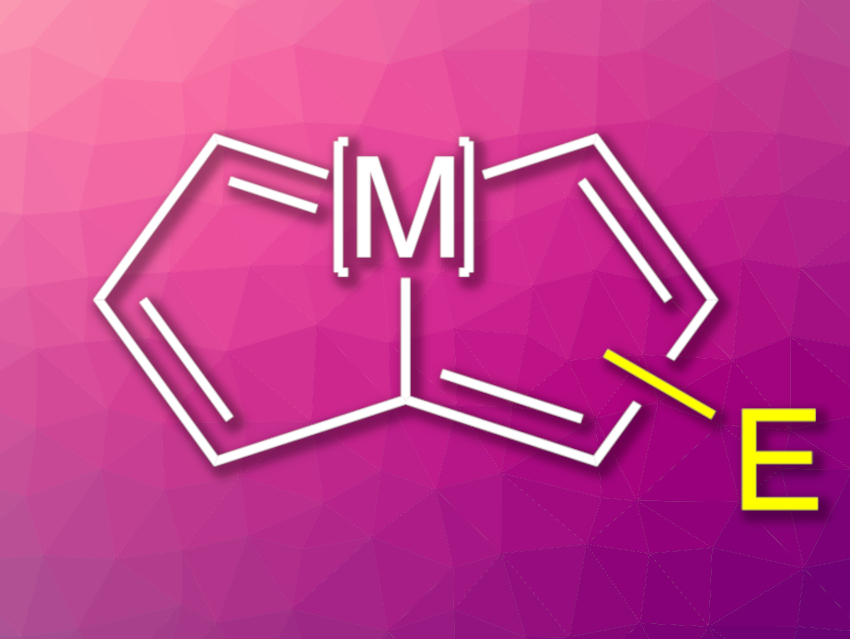Electrophilic aromatic substitution (EAS) reactions are characteristic reactions of aromatic species and useful in synthetic chemistry. EAS reactions of compounds with Hückel aromaticity are well-established. In contrast, EAS reactions of non-classical aromatics have remained largely unexplored, especially those with Craig-Möbius aromaticity. While Hückel aromatics contain 4n+2 π-electrons, Möbius aromatics have 4n π-electrons. There are two types of Möbius-aromatic compounds, called Craig and Heilbronner types, in which there is either a twist in the atomic orbitals of a planar structure or a twist in the nuclear framework, respectively.
Hong Zhang, Xiamen University, China, Haiping Xia, Xiamen University and Southern University of Science and Technology, Shenzhen, China, and colleagues have developed EAS reactions in Craig-Möbius aromatics, i.e., osmapentalenes and fused osmapentalenes (example product pictured). The highly reactive nature of osmapentalenes makes them susceptible to electrophilic attack by halogens. The team used halobenzoiodaoxoles as electrophilic halogen reagents to introduce chloro- or bromo-substituents.
The researchers found that osmapentalenes, osmafuran-fused osmapentalene, and osmabenzene-fused osmapentalene can undergo typical EAS reactions with high efficiencies and remarkable regioselectivities. They obtained unprecedented metallacyclic species, such as unsaturated chlorirenium ions, as well as polysubstituted products for the fused osmapentalene systems.
- Electrophilic aromatic substitution reactions of compounds with Craig-Möbius aromaticity,
Yuanting Cai, Yuhui Hua, Zhengyu Lu, Qing Lan, Zuzhang Lin, Jiawei Fei, Zhixin Chen, Hong Zhang, Haiping Xia,
Proc. Natl. Acad. Sci. USA 2021, 118, e2102310118.
https://doi.org/10.1073/pnas.2102310118




